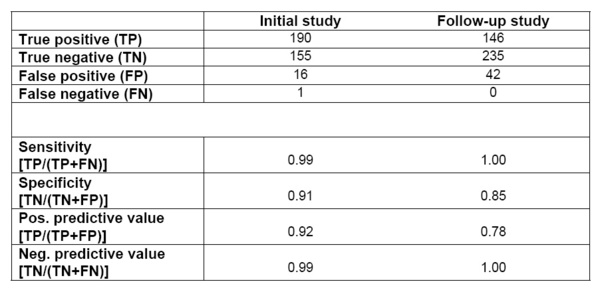The WAGER, Vol 4(18) – Testing a Test: Sensitivity Training
In issue 28 of volume 2, the WAGER examined the work of Johnson, Hamer, Nora, Tan, Eisenstein, & Engelhart (1997), who tested the validity of a 2-question screen for pathological gambling.1 The two items were taken from DSM-IV criteria and chosen by process of logistic regression: 1) Have you ever had to lie to people important to you about how much you gambled? 2) Have you ever felt the need to bet more and more money? The initial study reported a high degree of validity for the test, as represented by standard epidemiological parameters. However, the study included only males. In a recent article, the authors attempted to replicate their work with a sample of both males and females.2 The sample included 146 pathological gamblers who had given a maximum of seven negative answers to the GA 20 questions. The control group was composed of 277 employees of the Department of Veterans Affairs. Among the many indicators of a screen’s validity, two are particularly important. Sensitivity is defined as the probability that a screen will identify a person as a pathological gambler given that he or she does indeed have the disorder. Specificity is defined as the probability that the screen will not classify a person as a pathological gambler given that he or she does not have the disorder. Higher values for both parameters indicate a high level of quality for a given screen. Thus, sensitivity for the initial study of .99 means that the 2-question screen correctly identified 99% of subjects who were truly pathological gamblers according to the GA20. The specificity of .85 for the follow-up study means that 85% of non-pathological subjects were correctly identified as not having the disorder. The table below summarizes the parameters calculated for both studies. Although the specificity decreased with the addition of female subjects, the overall validity of the 2-question screen suggests its usefulness- particularly in brief clinical encounters when employing a more comprehensive instrument is difficult or impossible.
Sources: 1Johnson, E.E., Hamer, R.N., Nora, R., Tan, B., Eisenstein, N., & Engelhart, C. (1997). The Lie/Bet Questionnaire for screening pathological gamblers. Psychological Reports, 80, 83-88. 2 Johnson, E.E, Hamer, R.M., & Nora, R.M. (1998). The Lie/Bet Questionnaire for screening pathological gamblers: A follow-up study. Psychological Reports, 83, 1219-1224.
Receive an weekly e-mail reminder whenever a new issue of the WAGER is posted online. Sign up at:
www.thewager.org/mailist.html
This public education project is funded, in part, by The Andrews Foundation and the National Center for Responsible Gaming.
